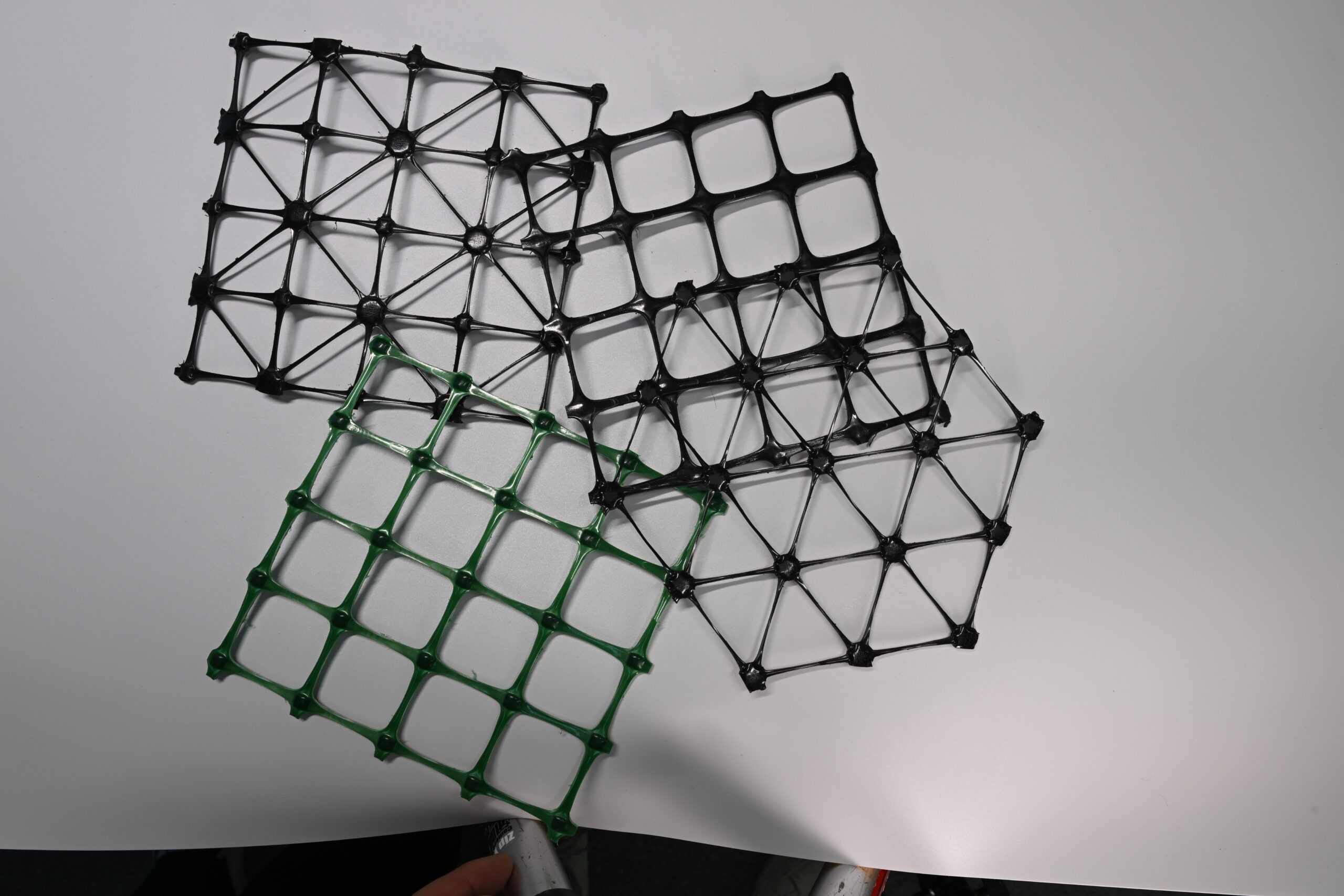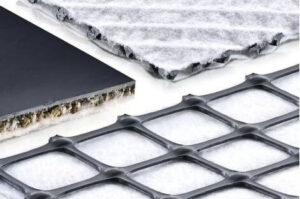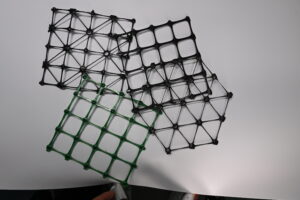What is a geogrid?
Geogrid is a high-strength reinforcing material used to reinforce soil, with excellent mechanical properties such as tensile, compressive, and shear resistance.
Geogrids can be divided into square grids and hexagonal grids, usually made of polymer materials. Compared with traditional soil reinforcement methods, the application of geogrids has the following advantages:
High strength: Geogrids have high tensile strength and stiffness, which can effectively enhance the bearing capacity and stability of soil.
Good flexibility: The flexibility of geogrids can help them adapt to changes in surface shape, avoiding cracks and deformation caused by changes in temperature and humidity.
Anti aging and corrosion resistance: the geogrid is made of high quality polymer materials, which has good anti-aging and corrosion resistance, and can still maintain long-term use in harsh environments.
Simple construction: Geogrids can be directly welded or nailed into the soil, making construction simple and fast without the need for special equipment and technology.
Economical and practical: compared with the traditional earthwork reinforcement method, the geogrid has the advantages of small project volume, material saving, simple construction, etc., which can effectively reduce the project cost and improve the economic benefits of the Engineering economics.
In summary, geogrid is a widely used and effective soil reinforcement material, which has been widely used in fields such as railways, highways, water conservancy, etc
。
There are four types of geogrids
Plastic geogrids: Most geogrids are made of plastic materials, mainly including polyethylene, polypropylene, polyvinyl chloride, etc. These materials have good corrosion resistance and aging resistance, light weight, flexibility, and can adapt to changes in surface morphology
Steel plastic composite geogrid: Steel plastic composite geogrid is formed by alternating weaving of steel wire and plastic layers. This type of geogrid has high stiffness and strength, and is suitable for situations that require bearing large loads and being subjected to severe deformation or compression.
Glass fiber geogrid: Glass fiber geogrid has high tensile strength and stiffness, and is suitable for occasions with high requirements for mechanical properties, corrosion resistance, and high temperature resistance.
Ferrite geogrid: Ferrite geogrid is mainly processed from ferrite sheets. This type of geogrid has high strength and stiffness, can withstand large loads and high stresses, and is suitable for situations with high strength requirements.
Biogeogrid: Biogeogrid is mainly made of natural biological fibers or colloidal materials produced by artificial bacteria. It has good biocompatibility and biodegradability, which helps to restore and protect natural environments such as soil and vegetation, and is suitable for environmental protection and ecological restoration projects.
In summary, different types of geogrids have their own characteristics and applicability, and in practical applications, they need to be selected based on specific situations.
The installation of geogrids generally requires the following steps
Clean the base surface: Clean the base surface, remove debris, soil, etc., and ensure that the base surface is flat and firm.
Pre embedded anchor bolt: embed the anchor bolt in the base, and then use a soil drill or manual tapping to fully embed the anchor bolt into the base. After being pulled out, the groove of the anchor rod is left, which is beneficial for geotechnical engineering. Grid positioning.
Laying geogrid: Lay geogrid on the foundation, determine the elevation according to the design requirements, and cut to avoid excessive joints. The geogrid of the same level must be laid in staggered joints, ensuring that the spacing between anchor rods is not less than the specified value, and it is not allowed to insert anchor rods into the joints of the geogrid.
Fixed geogrid: The geogrid is fixed to the base through anchors. Steel geogrids need to be fixed with clamps, bolts, etc., while plastic geogrids need to be welded or wrapped for reinforcement. During the fixation process, attention should be paid to avoiding issues such as high and low fluctuations, distortion, and deformation of the geogrid.
Joint treatment: Adjacent geogrids are fixed by welding or wrapping, and single sided reinforcement is required on the sealing end side to avoid stress concentration and cracking.
Reinforcement treatment: The geogrid needs to be reinforced according to the actual situation during construction. The reinforcement treatment methods include increasing the number of geogrid layers, widening the width of the embedded base layer, and strengthening fixtures.
In short, when installing geogrids, construction should be strictly carried out in accordance with design requirements, and the quality of each link should be strictly controlled to ensure construction quality.
Author
-

Founded in 2002, Tinhy's team focuses on the manufacturing, marketing, installation, application and research and development of geosynthetic materials.
View all posts






